Conditions
- Anatomy
- Conditions
- Treatments
Flexor Tendon Injuries
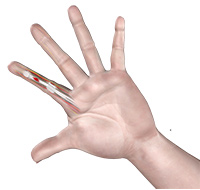
Tendons are the bands of fibrous connective tissue that connect muscles to bone. Tendons aid in movement of the fingers, hand and all other body parts. There are two types of tendons present in the hand- extensor tendons and flexor tendons. Extensor tendons present on top of the hand help with straightening the fingers, whereas, flexor tendons that lie on the palm side of the hand help in bending the fingers. The flexor tendons are smooth, flexible, thick tissue strands which bend the fingers.
De Quervain’s Tendinosis
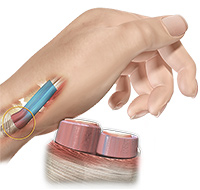
The muscles and bones of the hand are connected by thick flexible tissue called tendons. Tendons are covered by a thin soft sheath of tissue known as synovium. Extensor pollicis brevis and abductor pollicis longus are two tendons located on the thumb side of the wrist. Inflammation and swelling of the tendon sheaths put pressure on the adjacent nerves and leads to pain and numbness in the thumb side of the wrist.
Carpal Tunnel Syndrome

Carpal tunnel syndrome is a common, painful, progressive condition that is caused by compression of the median nerve at the wrist area. Common symptoms of carpal tunnel syndrome include numbness and tingling sensation in all the fingers except the little finger; pain and burning sensation in hand and wrist that may radiate up the arm and elbow; and weakness in hand with diminished grip strength.
Dupuytren’s Contracture
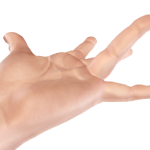
Dupuytren’s Contracture is a hand condition where thickening of the underlying fibrous tissues of the palm causes the fingers to bend inward. Patients with this condition are unable to fully straighten the affected fingers.
Trigger Finger
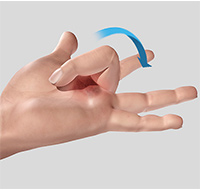
The ability to bend the fingers is governed by supportive tendons that connect muscles to the bones of the fingers. The tendons run along the length of the bone and are kept in place at intervals by tunnels of ligaments called pulleys. When the fingers bend, or are straightened, a slippery coating called tenosynovium helps the tendons smoothly glide through the ligaments with reduced friction.
Wrist Fracture
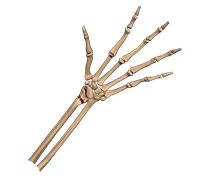
The wrist is comprised of two bones in the forearm, the radius and ulna, and eight tiny carpal bones in the palm. The bones meet to form multiple large and small joints. A wrist fracture refers to a break in one or more of these bones.
Fractures of the Hand and Fingers
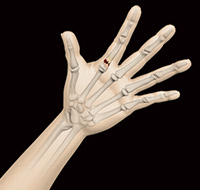
The hand is one of the most flexible and useful parts of our body. Because of overuse in various activities, the hands are more prone to injuries, such as sprains and strains, fractures and dislocations, lacerations and amputations while operating machinery, bracing against a fall and sports-related injuries.
Hand Infections
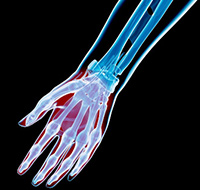
The hand becomes infected more frequently as it is one of the most commonly injured parts of our body. Hand infections, if left untreated or treated improperly, can cause disabilities such as stiffness, contracture, weakness, and loss of tissues (skin, nerve and bone) that will persist even after the infection resolves. Therefore, prompt treatment of hand infections is important.
Arthritis of the Hand and Wrist
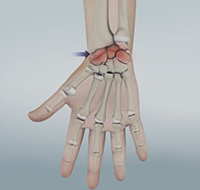
Arthritis is an inflammatory condition of the joints. There are several types of arthritis and the most common type is osteoarthritis or wear-and-tear arthritis. Arthritis affects various joints in the body and the arthritis in the hand affects the joint at the base of the thumb. Arthritis may also affect the joints of other digits and the symptoms include swelling, pain, stiffness and malformation, all of which interfere with the use of the hand.
